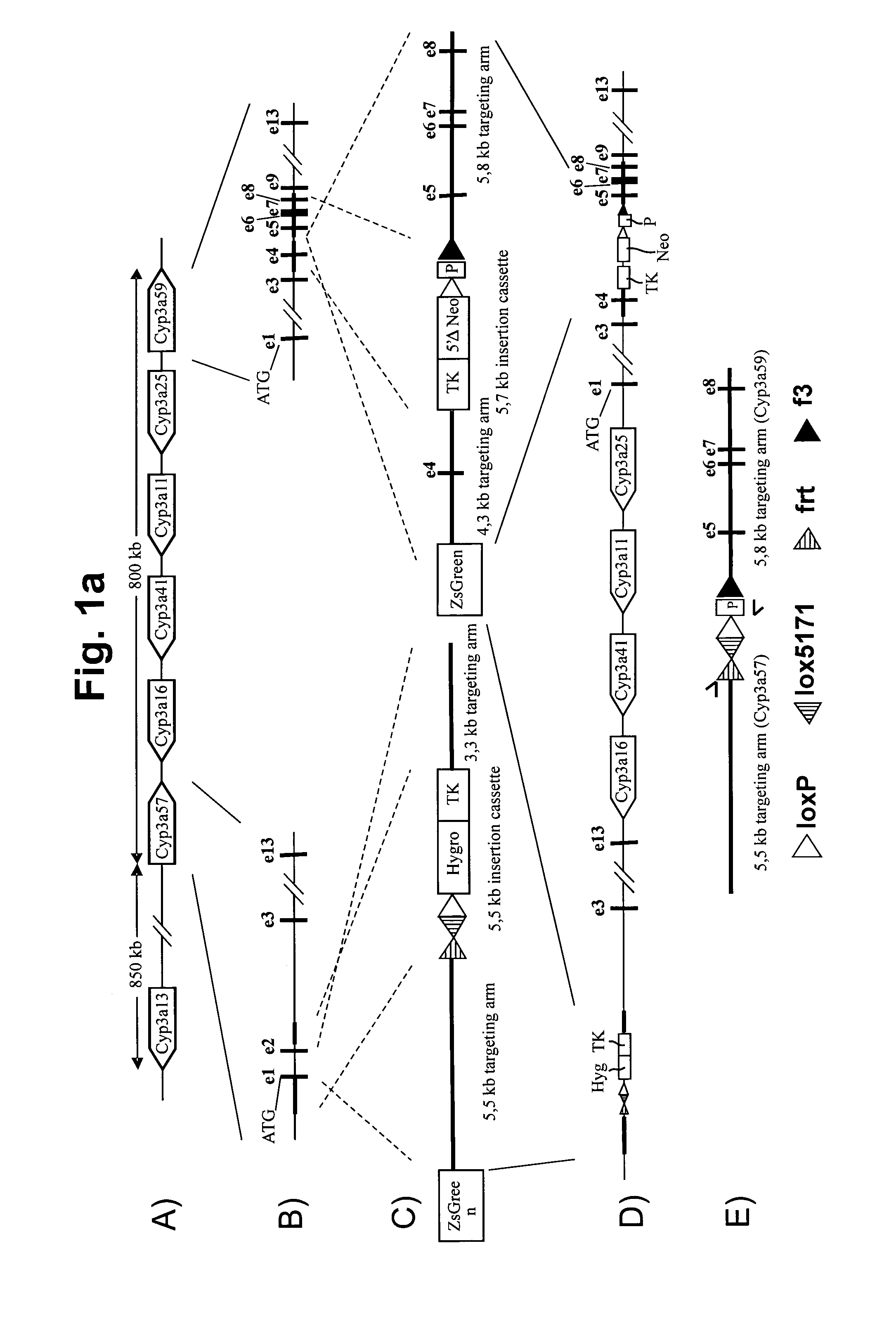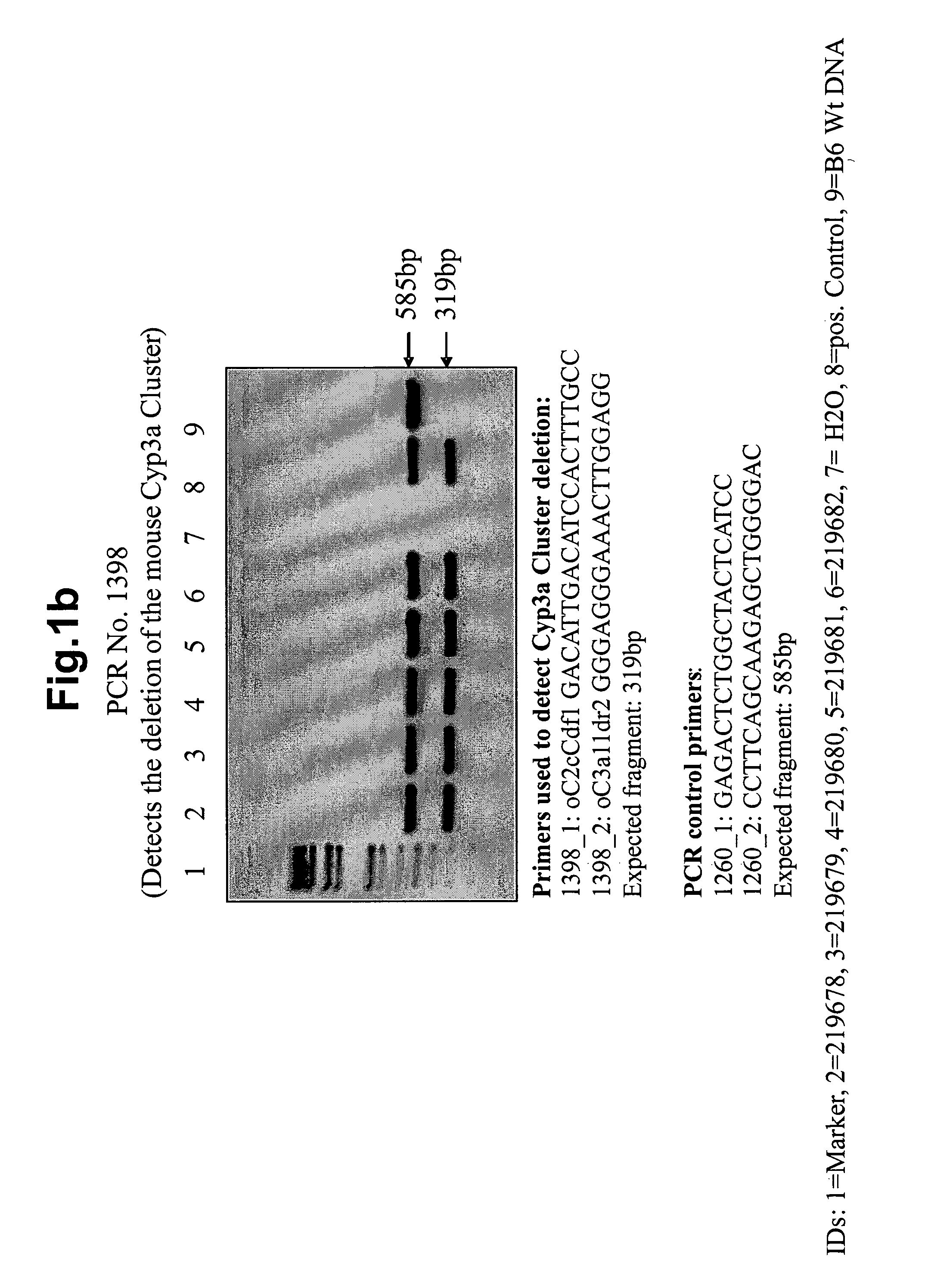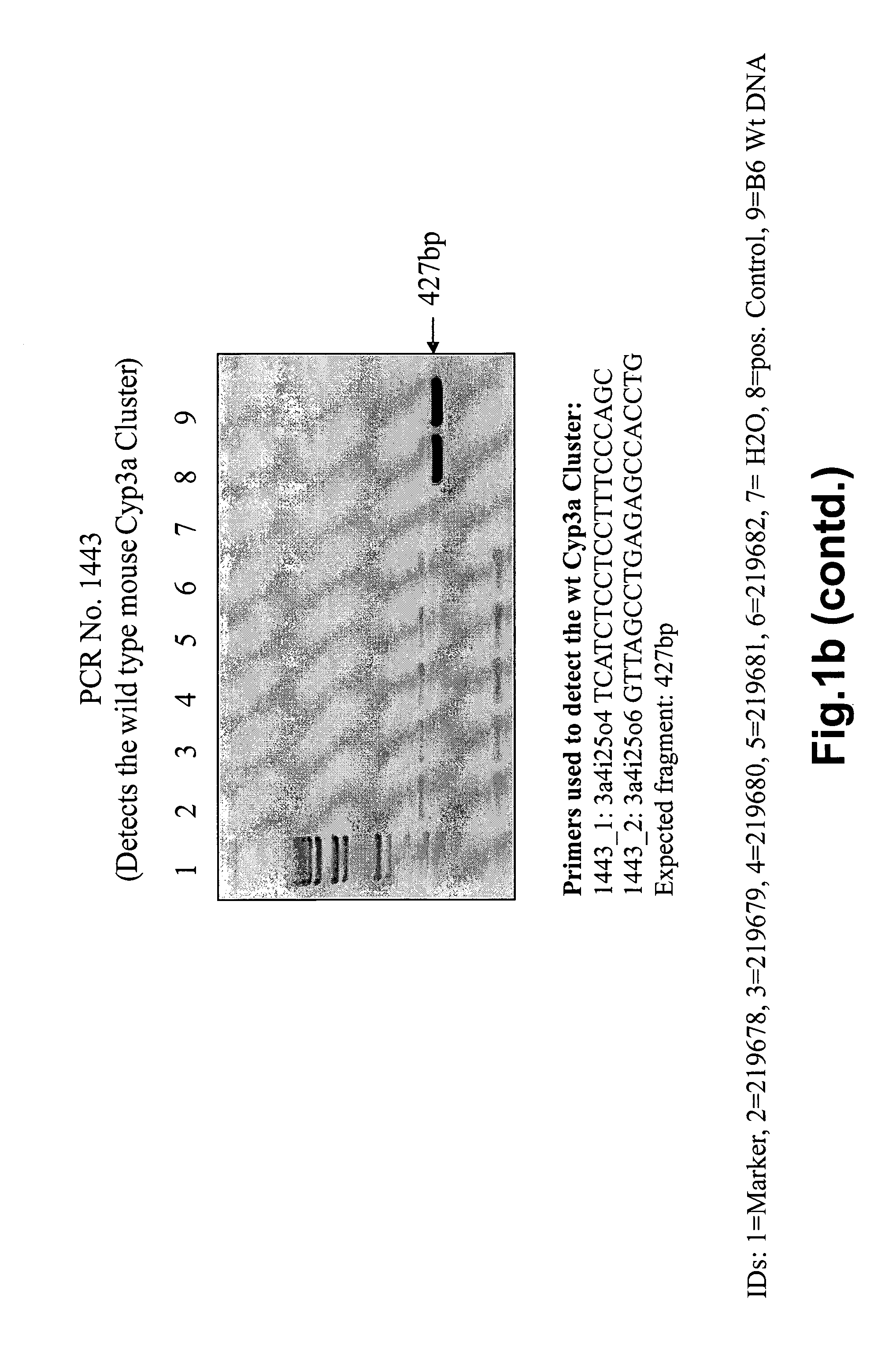Knockout mice for a P450 gene cluster
a mouse and knockout technology, applied in the field of mouse models of drug metabolism, can solve the problems of total deletion of these drug metabolising functions, cell death or neonatal lethality, etc., and achieve the effects of reducing or undetectable ability to activate or induce expression, facilitating identification of analogs of drug compounds, and fewer side effects
- Summary
- Abstract
- Description
- Claims
- Application Information
AI Technical Summary
Benefits of technology
Problems solved by technology
Method used
Image
Examples
example 1
Cyp3a Cluster Exchange
[0124]The 5′ end of the mouse Cyp3a cluster was targeted by homologous recombination, so that a frt, lox5171 and wildtype loxP site are inserted downstream of Exon1 of the Cyp3a57 gene as depicted in FIG. 1a. Furthermore, a hygromycin resistance and a thymidine kinase (TK) expression cassette were co-introduced as depicted.
[0125]Correctly-targeted ES cells were further modified by a subsequent step of homologous recombination at the 3′ end of the mouse Cyp3a cluster, so that a wildtype loxP and a f3 site are inserted downstream of Exon4 of the Cyp3a59 gene. A 5′ deficient neomycin resistance and a TK expression cassette were co-introduced as depicted in FIG. 1b. The translational start ATG is separated in frame from the 5′ deficient neomycin resistance cassette by the loxP site, so that additional amino acids encoded by the loxP site are attached to the N-terminus of the neomycin protein.
[0126]To allow the deletion of the mouse Cyp3a cluster by Cre-mediated rec...
example 2
Cyp2c Cluster Exchange
[0176]The 5′ end of the mouse Cyp2c cluster was targeted by homologous recombination, so that a wildtype loxP and a f3 site are inserted downstream of Exon 1 of the Cyp2c55 gene. A 5′ deficient neomycin resistance and a TK expression cassette were co-introduced as depicted in FIG. 2a. The translational start ATG is separated in frame from the 5′ deficient neomycin resistance cassette by the loxP site, so that additional amino acids encoded by the loxP site are attached to the N-terminus of neomycin protein.
[0177]Correctly targeted ES cells were further modified by a subsequent step of homologous recombination at the 3′ end of the mouse Cyp2c cluster, so that a frt, lox5171 and wildtype loxP site are inserted downstream of Exon5 of the Cyp2c70 gene as depicted in FIG. 2b. Furthermore, a hygromycin resistance and a thymidine kinase (TK) expression cassette were co-introduced as depicted.
[0178]To allow the deletion of the mouse Cyp2c cluster by Cre-mediated recomb...
example 3
Homozygous Cyp3a Cluster Knock-Out / Cyp2c Cluster Knock-Out Mice
[0180]A viable mouse (ID 234254) has been bred through crossing Cyp3a and Cyp2c KO mice together. This mouse carries a homozygous deletion of both the mouse Cyp3a cluster (7 genes deleted) and Cyp2c cluster (14 genes deleted).
[0181]FIG. 2e shows PCR confirmation of the absence of the mouse Cyp3a cluster from the genome in mouse ID 234254. FIG. 2f shows PCR confirmation of the absence of mouse Cyp2c cluster from the genome of the same animal.
[0182]The homozygous Cyp3a cluster KO / Cyp2c cluster KO mice will be characterised in terms of their histopathology, biochemistry, protein expression and mRNA transcript levels, as detailed in example 1. Additionally, further characterisation of the strain employing known and hypothetical Cyp2c P450 isoform substrates shall be performed.
PUM
| Property | Measurement | Unit |
|---|---|---|
| body weight | aaaaa | aaaaa |
| sizes | aaaaa | aaaaa |
| time | aaaaa | aaaaa |
Abstract
Description
Claims
Application Information
 Login to View More
Login to View More - R&D
- Intellectual Property
- Life Sciences
- Materials
- Tech Scout
- Unparalleled Data Quality
- Higher Quality Content
- 60% Fewer Hallucinations
Browse by: Latest US Patents, China's latest patents, Technical Efficacy Thesaurus, Application Domain, Technology Topic, Popular Technical Reports.
© 2025 PatSnap. All rights reserved.Legal|Privacy policy|Modern Slavery Act Transparency Statement|Sitemap|About US| Contact US: help@patsnap.com



